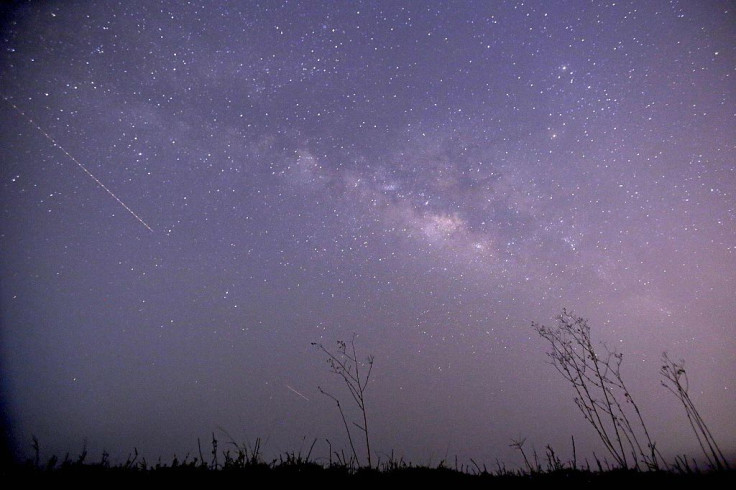Lyrids 2018: How To Watch Dazzling Shooting Stars This Weekend

Lyrids, one of the oldest known annual meteor showers, is set to reach in a few days, giving sky-watchers an amazing show of shooting stars in the night sky.
The event started earlier this week and will continue till the mid of next, but in order to catch the best views, sky-gazers will have to head out during the peak hours on the night of Saturday or early Sunday morning.
As EarthSky reported, this will be the best sky-watching event since January’s Quadrantids and will treat viewers with as many as 10-20 shooting stars every hour.
How to watch the meteor shower?
On the night of April 21-22, viewers are advised to head out sometime between moonset and moonrise, as during this period, the sky will be darkest and they can easily find dazzling shooting stars streaking all across the sky. The moon is expected to set around 2 a.m. local time across much of Europe, North America, mid-northern latitudes, and the exact timing can be checked here.
The radiant of Lyrids, the area from which the shooting stars appear to originate, will be also highest in the sky after midnight, something that would further improve the viewing experience.
That said, once you’re out at the right time, try to find an open space where you can observe a large portion of the sky without any intrusion like tall buildings or trees. You won’t need any binoculars or telescopes, but moving away from artificial lighting as far as possible could also help.
After reaching the viewing spot, just lie down and relax and give your eyes some 20-30 minutes to adjust to the darkness. Lyrids’ radiant lies east-northeast near the bright star Vega in constellation Lyra, but that doesn’t mean looking in that particular direction is mandatory. By the time, meteors enter Earth’s atmosphere and burn, they could be in any part of the night sky.
Lyrids are one of the oldest seen meteor showers, having been observed at least since 687 B.C. They streak across the sky when Earth passes through the trail of debris left behind by Comet Thatcher, officially known as C/1861 G1. The space rock takes some 415 years to complete a single orbit of the sun and won’t make a close pass by planet Earth until the year 2276.
Normally, Lyrid meteor shower happen at the rate of 10-20 shooting stars per hour, but there are also some periods of outbursts during which viewers get to see a whopping 100 glowing meteors every hour or even more than that. However, the phenomenon happens in decades and isn’t expected to occur anytime soon.
© Copyright IBTimes 2024. All rights reserved.





















